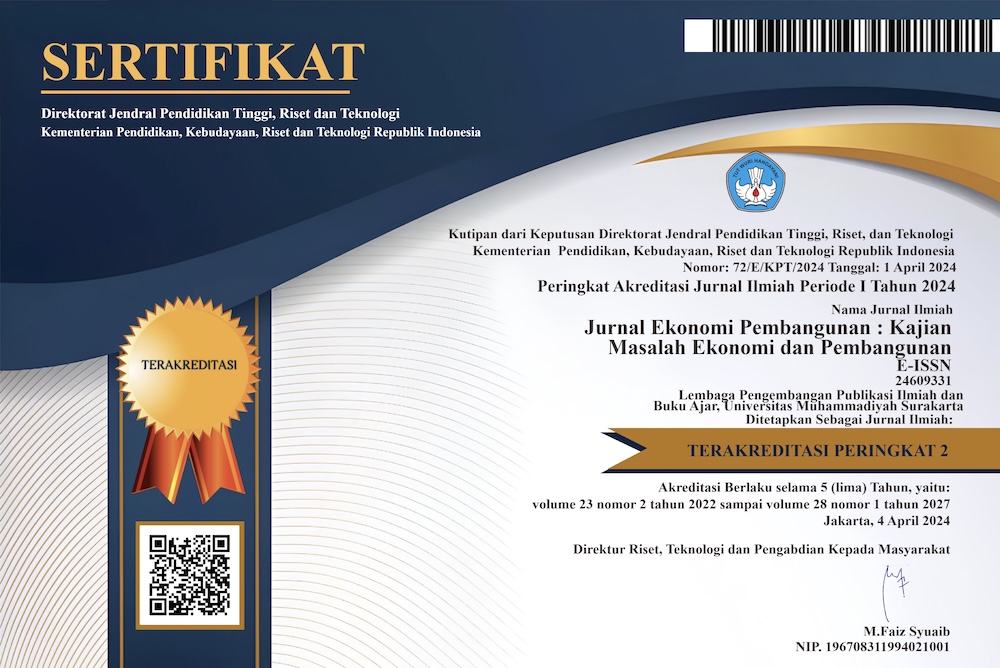Spatial Relationship Between Low Income Population and Regional Development Index in Mesuji District
DOI:
https://doi.org/10.23917/jep.v23i1.16907Keywords:
spatial autocorrelation, poverty proportion, educational facilitiesAbstract
This research aims to examine autocorrelation spatial analysis to see patterns of relationships or connections between locations (observations). In the study of the proportion of poverty in Mesuji District, it will provide important information in analyzing the poverty relationship between regions. Therefore, this research provides a spatial autocorrelation analysis in 2017. The methods used were the Moran’s I test and the Local Indicator of Spatial Autocorrelation (LISA). The discussion shows a spatial relationship between the proportions of poor people between seven sub-districts in Mesuji Regency in 2017. In addition, the spatial distribution patterns will be clustered. Panca Jaya District has classified in one grouping of poverty called a low-low group. On the other hand, the high-low and low outlier categories were not found in the inter-district research area in Mesuji Regency. Finally, the regional development index variable has a negative and significant effect on the current population spacing without spatial concepts and concepts.















